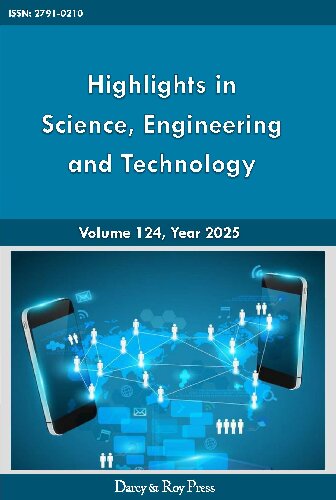Multiple Machine Learning Algorithms-based Credit Card Fraud Detection
DOI:
https://doi.org/10.54097/5bxeae69Keywords:
Machine learning, Artificial intelligence, Credit card fraud detection.Abstract
In recent decades, the rise of E-commerce has made credit cards a popular choice for transactions due to their convenience. However, this has also led to an increase in credit card fraud, posing a significant financial threat. To tackle this issue, this study investigates the use of machine learning models for credit card fraud detection. The research explores three models: Gradient Boosting, Decision Trees, and K-Nearest Neighbors (KNN), assessing their performance using metrics like Area under the Precision-Recall Curve (AUPRC), precision, recall, and F1-score. The study employs the Synthetic Minority Oversampling Technique (SMOTE) algorithm to address the dataset's class imbalance, creating a balanced training dataset. Among the models, Gradient Boosting achieves the highest AUPRC of 0.81, indicating its effectiveness in general scenarios. However, its precision in detecting fraudulent transactions remains a challenge. The Decision Tree model provides a balanced performance with an AUPRC of 0.59, while KNN stands out with a higher precision for fraudulent transactions, achieving an AUPRC of 0.77. These findings highlight the need for continuous improvement in fraud detection techniques, suggesting that hybrid models or ensemble approaches could enhance detection capabilities by leveraging the strengths of different models.
Downloads
References
[1] Yusuf Sahin, Serol Bulkan, Ekrem Duman. 2013. A cost-sensitive decision tree approach for fraud detection. Expert Systems with Applications, 40(15): 5916-5923.
[2] Aderemi O. Adewumi, Andronicus A. Akinyelu. 2017. A survey of machine-learning and nature-inspired based credit card fraud detection techniques. International Journal of System Assurance Engineering and Management, 8: 937-953.
[3] Tej Paul Bhatla, Vikram Prabhu, Amit Dua. 2003. Understanding credit card frauds. Cards Business Review, 1(6): 1-15.
[4] Sahil Dhankhad, Emad Mohammed, Behrouz Far. 2018. Supervised machine learning algorithms for credit card fraudulent transaction detection: a comparative study. In 2018 IEEE International Conference on Information Reuse and Integration (IRI), IEEE, 122-125.
[5] S. Patil, V. Nemade, P.K. Soni. 2018. Predictive modelling for credit card fraud detection using data analytics. Procedia Computer Science, 132: 385-395.
[6] Yashvi Jain, Namrata Tiwari, Shripriya Dubey, Sarika Jain. 2019. A comparative analysis of various credit card fraud detection techniques. International Journal of Recent Technology and Engineering, 7(5): 402-407.
[7] Credit Card Fraud Detection. 2019. Available: https://www.kaggle.com/mlg-ulb/creditcardfraud.
[8] Alexey Natekin, Alois Knoll. 2013. Gradient boosting machines, a tutorial. Frontiers in Neurorobotics, 7: 21.
[9] Yan-Yan Song, L.U. Ying. 2015. Decision tree methods: applications for classification and prediction. Shanghai Archives of Psychiatry, 27(2): 130.
[10] Leif E. Peterson. 2009. K-nearest neighbor. Scholarpedia, 4(2): 1883.
Downloads
Published
Issue
Section
License
Copyright (c) 2024 Highlights in Science, Engineering and Technology

This work is licensed under a Creative Commons Attribution-NonCommercial 4.0 International License.


















